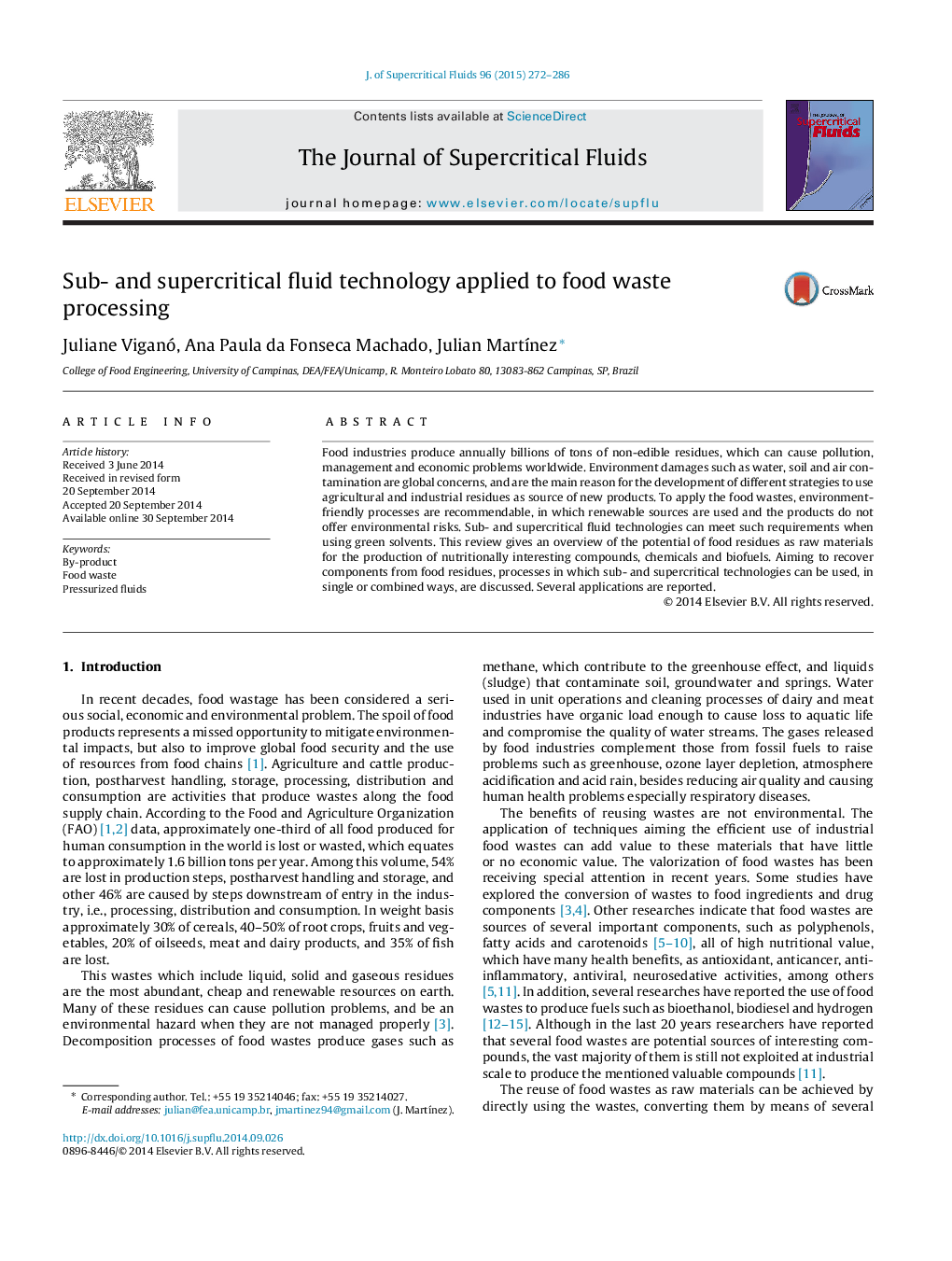| Article ID | Journal | Published Year | Pages | File Type |
|---|---|---|---|---|
| 230462 | The Journal of Supercritical Fluids | 2015 | 15 Pages |
•The recovery of valuable compounds from food wastes can be achieved by means of supercritical fluid technologies.•Examples of supercritical fluid processing of residues from vegetables, meat, biomass, and other products are given.•Supercritical processing of food wastes can be intensified by auxiliary techniques.•The integration of supercritical fluid processes with other clean technologies should improve the food waste recovery.
Food industries produce annually billions of tons of non-edible residues, which can cause pollution, management and economic problems worldwide. Environment damages such as water, soil and air contamination are global concerns, and are the main reason for the development of different strategies to use agricultural and industrial residues as source of new products. To apply the food wastes, environment-friendly processes are recommendable, in which renewable sources are used and the products do not offer environmental risks. Sub- and supercritical fluid technologies can meet such requirements when using green solvents. This review gives an overview of the potential of food residues as raw materials for the production of nutritionally interesting compounds, chemicals and biofuels. Aiming to recover components from food residues, processes in which sub- and supercritical technologies can be used, in single or combined ways, are discussed. Several applications are reported.
Graphical abstractFigure optionsDownload full-size imageDownload as PowerPoint slide
